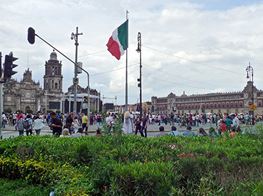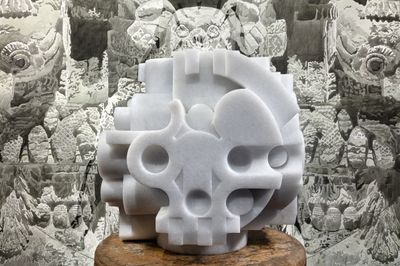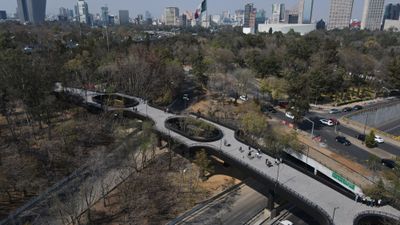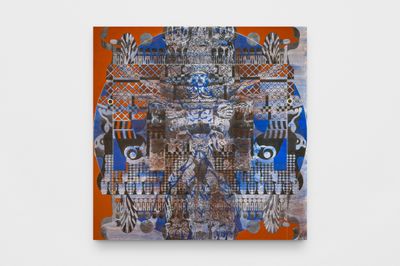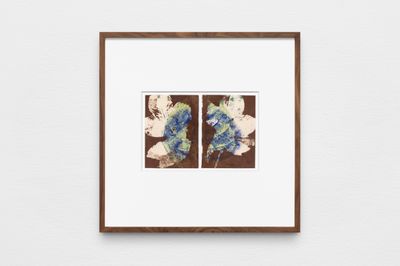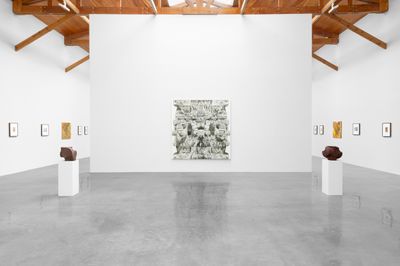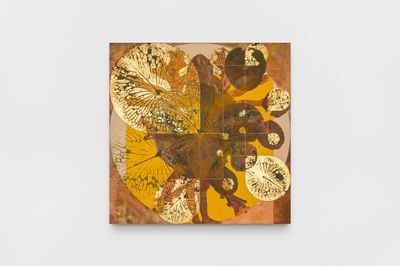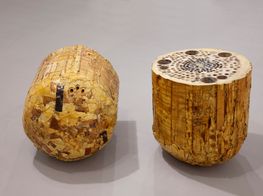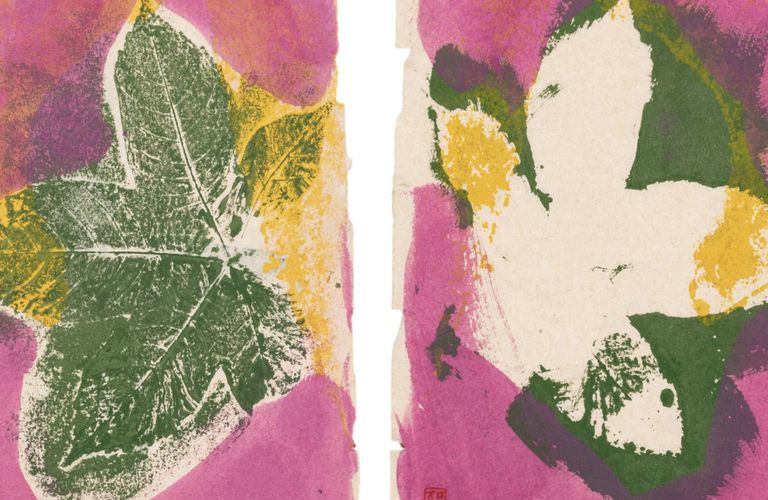
Gabriel Orozco: The Mercurial
Maestro of Mexico
Dressed head-to-toe in denim, Gabriel Orozco flings one snakeskin boot over the other, leans back on the sofa, and lights up an American Spirit cigarette.
We are at the gallery kurimanzutto in Mexico City, looking over the opening night crowds at the Index Art Book Fair, a four-day gathering of independent art publishers from around the globe. Now for its 10th edition, the Mexican artist finds himself to be the star guest.
He's here for a book signing for his latest publication Diario de Plantas (2023), a hefty two-volume collection of 724 drawings and imprints of leaves that Orozco made in Tokyo and Acapulco, a city on the Pacific Coast of Mexico, between 2021 and 2022.
It's these notebooks of drawings that we've come to talk about today. That, and an exhibition's worth of his recent sculptures and paintings at José Kuri and Mónica Manzutto's gallery, opening during Mexico City Art Week (7–11 February 2024).
Spanning close to four decades, Orozco's practice is lionised both at home and abroad. His work is best understood in the context of the world around us, making the everyday visible through the boundaries of art.
Materiality can by no means fasten it together. One moment he'll be rolling a plasticine ball down the street, waiting for it to be brandished with a drain that comes its way (Yielding Stone, 1992), the next he'll have sliced a Citröen car into three and reassembled it without its midsection (La DS, 1993).
In saying that, Orozco's varied approach to art-making, and lust for life's overlooked, has remained faithful to his penchant for games, complex geometry, and the circle's symbolic form.
For his kurimanzutto show, he brings dice, or 'Dés', to go by the French translation of the series. Carved from red volcanic tezontle and white marble—both from Mexico—Orozco traced concentric circles with a compass onto the six sides of the 30 x 30 cm cube before carving the plane. While each die emerges from the same pattern, no two are the same.
Previous editions introduced limestone or black marble, which saw every fingernail mark fossilised in the former, and foliation in the latter.
Yet here, tezontle—the most brittle part of lava—exposes its honeycombed surface, a porous finish and deep red colour that can be spotted on the facades of buildings around the capital, such as the National Palace and Mexico City Metropolitan Cathedral.
While on landmarks, a scout around the city's Chapultepec Park—housing Calzada Flotante (2023), the 'floating causeway' that Orozco designed as part of the public regenerative Chapultepec Forest Cultural Project—lands you at its National Museum of Anthropology.
Here, you will come across the Coatlicue statue—the most famous surviving Aztec sculpture—and the subject of the show's numerous tempera paintings.
On a considerably more modest scale, the exquisitely framed 'Diário de Plantas' fills the gaps, tying the exhibition together. Mottled stains from the gouache, tempera, ink, and graphite leak into the fibrous paper, distilling the graceful yet unpredictable essence of nature itself.
Made through a cumulative process, this series gives a glimpse into Orozco's daily practice of documenting the textures and shapes of leaves that fell at his feet while walking through Acapulco and Tokyo, where he has resided on and off since 2015.
'I planned to be in Tokyo for six months,' he quips. 'Nearly ten years later, I haven't found a reason to leave.'
This nomadic existence—Orozco moves between Mexico City, Acapulco, Tokyo, and New York with his wife and son—and subsequent challenge to his own status quo gave momentum to his weekly gatherings that came to be known as 'The Friday Workshop'.
In 1987, Orozco travelled around Europe, and on his return found that he struggled to see parallels between his work and the context of Mexican art being made at the time.
He wasn't the only one. A group of young artists—Abraham Cruzvillegas, Damián Ortega, Jerónimo López Ramírez ('Dr. Lakra'), and Gabriel Kuri—were having a similar reckoning, feeling alienated by the traditional local scene in Mexico City.
Orozco found an answer in the form of weekly gatherings at his home in Tlalpan, Mexico City, where the band of artists came together to talk about life, drink mezcal, and make art.
Taller de los viernes or 'The Friday Workshop' assembled for five years, until 1992, and would later form the core of kurimanzutto, in both the artists it touted and the participatory dynamic it encouraged.
I wondered whether Orozco, who was a little older—with the other members all at university at the time—saw himself as a mentor to this now-prolific group of artists.
'We don't tend to use that word in Mexico,' Orozco dismisses. 'I prefer maestro.'
And what is the maestro's advice to the up-and-coming artist today?
'Don't do a postgraduate course. Instead, look at what's around you. Immerse yourself in your surroundings. Try not to get caught up about what you do and do not have. The conversations you have, the community you befriend, and the environment you challenge will be enough.'
A line was beginning to form in front of the desk of books emblazoned with his name. We make our way down into the gallery below, at which point he spots the headphones I left behind.
'What music do you listen to?' he asks.
I dodge the question in fear of saying something uncool and ask in return.
'Dry Cleaning' is his response—a post-punk band formed in South London in 2017. Marina Abramović is a fan too, apparently.
A quick Google search landed me on the news that the artwork for their 2022 album Stumpwork won a Grammy this week (February 2024) for 'Best Recording Package'.
The photograph features a pink bar of soap with the album title spelt out with pubic hair. And according to its guitarist Tom Dowse, the band's consensus was the more pubic the better: 'It makes it more intimate.'
To that extent, it seems they've taken a leaf out of Orozco's book.
'To be intimate you have to open yourself, to be fearless, to trust what is around you, animate and inanimate. Then you start to change the scale of things, of the public and private.'
Main image: Gabriel Orozco, Untitled (2021-2022). Set of 2. Gouache, tempera, ink and graphite on paper. Courtesy the artist and kurimanzutto, Mexico City / New York. Photo: Gerardo Landa / Eduardo Lópex (GLR estudio).


